What To Plant In July
Today, it’s all about what to plant in July. You still have plenty of time to plant seeds or seedlings this month. It’s not too late to grow and enjoy a fall harvest crop in late summer or early fall before the first frost date. By the way, how is your garden doing with the warm soil conditions? There is something special about a fall garden that is still in bloom and provides veggies you can enjoy all winter.
One good thing about this recent gardening season is that most of the country has had ample water from heavy winter snow and plenty of spring and early summer rain storms. We didn’t have to plant those drought-tolerant plants this growing season.
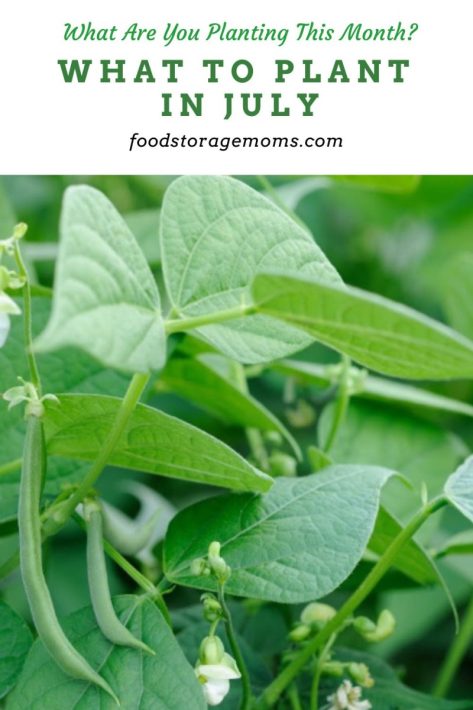
I like to update this post every year with new tips. This week, I would normally be planting more cilantro, carrots, zucchini, green onions, and green beans. You may remember that I’ve moved up north to build a small home, so I don’t have a garden this year. I’m looking forward to next year when the construction is done and I can lay out my small garden plot.
The house is almost complete this week. The kitchen cabinets are in place, and the countertops will be installed later today. It’s been nearly three years and frustrating, but it is what it is. I cannot have a garden this year; we must concentrate on moving into the house and emptying the climate-controlled storage units.
Where I buy my garden seeds: SeedsNow
What To Plant In July
I highly recommend planting flowers near your garden because if you have flowers, the bees and other pollinators will come and help pollinate your garden plants. Oh, and don’t forget the butterflies that pollinate and add fun color to the garden. They are magical to me. Perennial Salvia plants are my favorite flowers to bring bees to my garden area. Because they are perennials, you cut them back a few times a year, and they keep coming back, as do the bees. These are the seeds: Perennial Salvia.
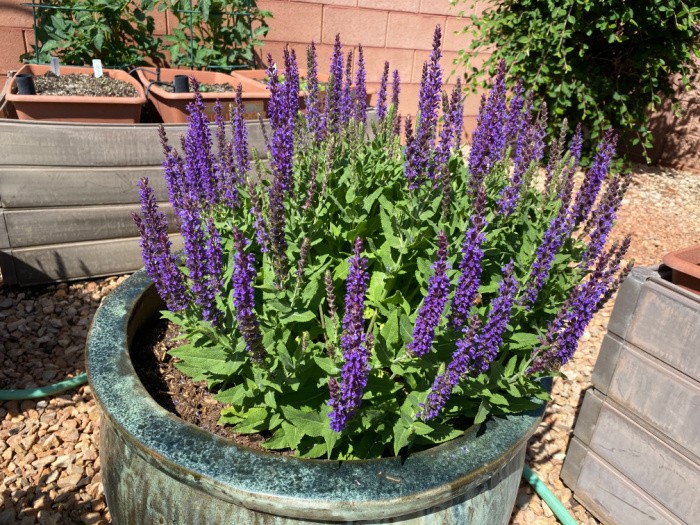
How I store my garden seeds:
Plastic Photo Container and Label Maker
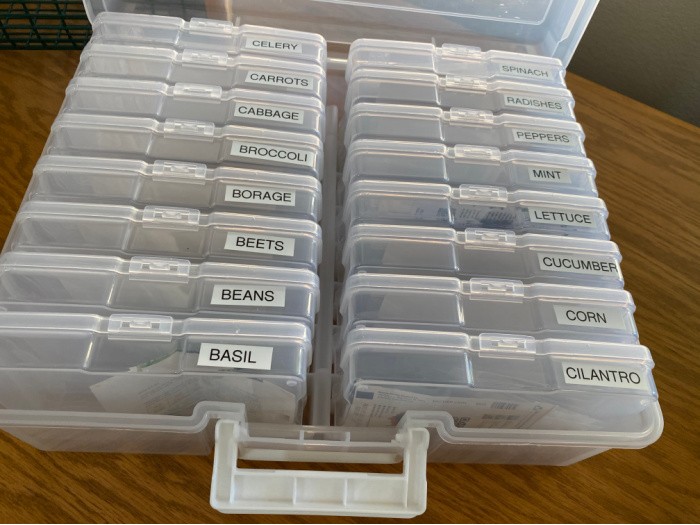
Where I buy my garden seeds: SeedsNow
I highly recommend these products for growing your seedlings: CowPots and Organic Seedling Soil. You plant your seeds and place the CowPots in your garden when the temperatures are right based on your specific hardiness zone location.
Soil pH Levels
What Does The Term pH Level Mean
People probably say that having the right pH level in your garden soil is essential for a successful harvest. You may wonder what pH level means when gardening and how to determine your garden soil’s pH level. Each plant prefers a different level of acidity to grow the very best harvest. The level of acidity desired varies between each plant.
Therefore, you can adjust the pH of your soil by adding lime or sulfur to bring it up or down, depending on what your soil needs. You can have your soil tested, possibly by your state extension service, or try to do it yourself with a soil tester. pH Tester Also, some local nurseries provide that service for their customers.
How To Hand Pollinate
All you need is a paintbrush or cotton swab (see below). If you need to hand pollinate because you aren’t seeing any fruit develop on your garden vegetables, here is something you may want to try. You do this by removing the male blossom (male blossoms don’t have fruit behind them).
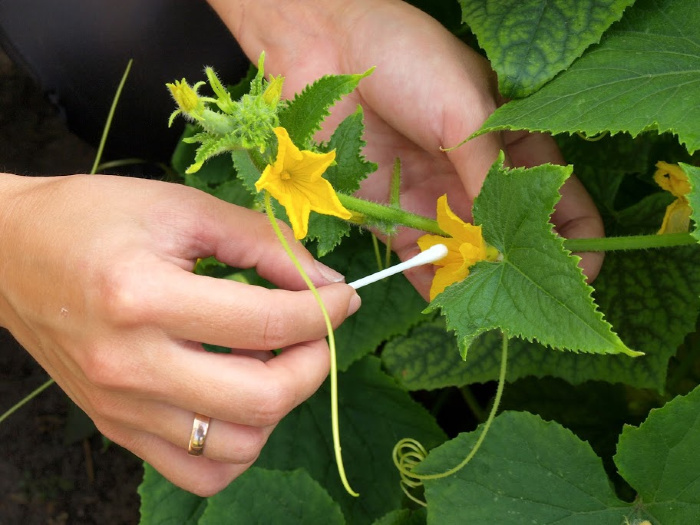
They produce pollen, leaving the center covered in the pollen to collect with the brush or swab. Use a brush or swab to apply the pollen you collected to the center of the female flower. This works for squash, melons, herbs, and cucumbers.
What to Plant in July by Zone
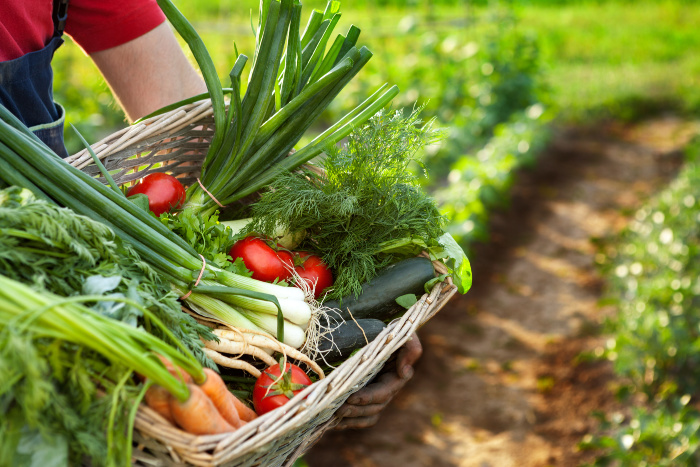
July is not too late to start a garden. It can be a perfect time, depending on your time zone. It’s interesting how the zones have changed a bit because of the temperature change worldwide. Planting times have changed a lot. Here is what you can plant by zone:
Zones 1-3
While July is peak harvesting time for many places, the cooler climate locations can start planting their gardens. If you live in zones 1-3, it is prime time to start planting the following:
- Arugula
- Beans (snap)
- Beets
- Broccoli
- Brussels sprouts (Zone 2)
- Cabbage
- Carrots (Zone 2)
- Chinese Cabbage
- Cilantro
- Endive
- Kale
- Kohlrabi
- Lettuce (head and leaf)
- Parsley
- Radish
- Rutabaga
- Spinach
Zones 4-5
Zones 4-5 are found throughout the Northern Midwest and New England. Here is what you can plant in these zones during July:
- Basil
- Beans (pole and bush)
- Beets
- Brussels sprouts
- Chinese cabbage
- Carrots
- Kale
- Kohlrabi
- Leeks
- Radishes
- Squash (Summer)
- Turnips
Zones 6-7
In zones 6-7, you have mild temperatures during this time. This means it is the optimal time to grow some of these plants in your garden:
- Carrots
- Radishes
- Spinach
Zones 8-10
When you live in the southern states, it is pretty hot during July. But there are still several items you can plant. Here are just a few:
- Brussels sprouts
- Cilantro
- Dill
- Eggplant
- Okra
- Peas (Southern)
- Peppers
- Squash
- Tomato
Cucumbers
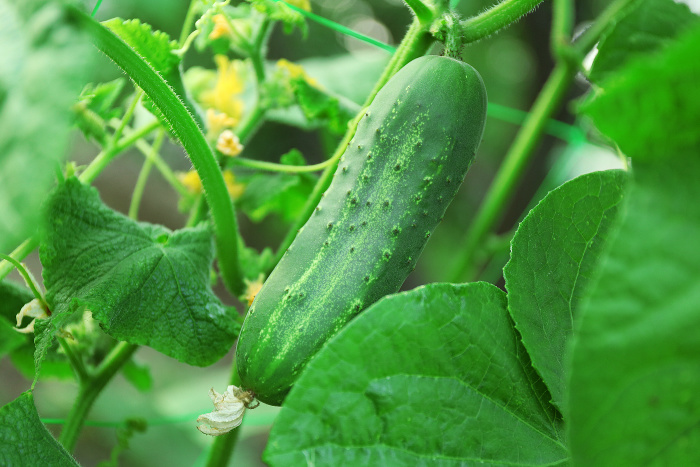
Cucumbers thrive when the weather is hot and receives a lot of water. Plant them in full sun. If you planted seeds inside, don’t set your seedlings outside until the weather is in the 70-degree range.
Check the last frost date and wait two weeks before planting the seedlings or seeds outside. You can plant a second set of cucumber seeds in the first week of July and still be able to harvest them before the first fall frost date.
Decide if you want to grow bush cucumbers or cucumbers on the vine. I have always had better luck with bush cucumbers, which work great in pots or small gardens.
This is why they do better in my raised gardens. I suggest you stagger when planting the seeds because you will have cucumbers bearing at different times during the growing season instead of all at once producing a huge harvest.
Compost and Well-Rotted Manure
Cucumbers like compost and composted well-rotted manure. They need well-fertilized soil. Cucumbers grow fast and don’t depend on much care or work to get them to thrive. When watering, try to keep the leaves dry to prevent leaf diseases from forming.
Male blooms show up first and drop off. No worries; a female flower will appear within a week or two. If not, you may have to do hand pollination. You remove the male blossom, leaving the center covered in the pollen. Use a brush or cotton swab to apply the pollen you collected to the center of the female flower.
Use metal cages for vines. The cucumbers will hang better on those because they attach more easily to the wires when growing. Plant two to three seeds about one inch into the soil and cover them with soil.
If the soil is moist and warm, you will see sprouts within a few days. Plant the seeds or plants 36-60 inches apart. Bush cucumbers can be planted closer. Cucumbers grow from start to finish in 50-70 days.
pH level for Cucumbers: 6.5 to 7.0
Green Beans
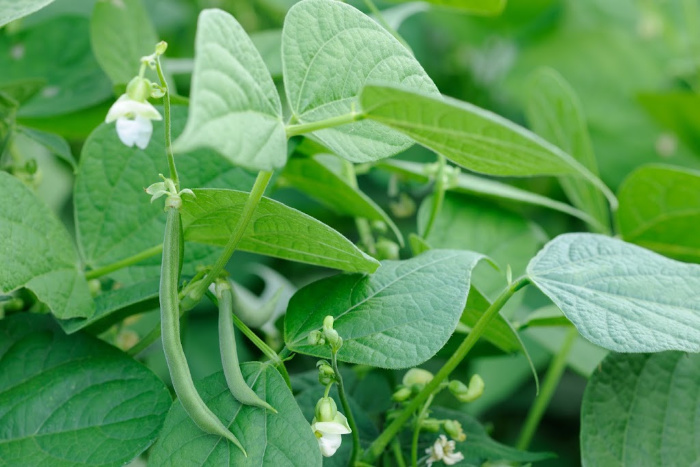
I have always grown bush beans. Their growing time is shorter, 60-70 days, which is just enough time if you plant the seeds in the first few days of July.
This is one of my favorite vegetables to grow. When our girls were growing up, we grew many green beans. We canned bushels of them in our pressure cooker.
They taste so good when they are freshly picked. I only grew bush beans, but you can plant pole beans if you can support them off the ground.
Bush beans grow about 2 feet tall, and pole beans grow up to 10 feet tall. Bush beans are ready to pick about 50-55 days after planting. Pole beans take a bit longer, so plan 55-65 days to harvest.
Please remember, if you can stagger the plantings every 2 weeks you can harvest green beans for weeks rather than all at once in one week.
Green beans are like well-composted, rich soil with rotted manure. You plant the seeds 1-2 -inches deep and cover them with soil. Space the seeds in rows about 6-8 inches apart.
Water them immediately and regularly until they begin to sprout. After sprouting, they need 1 to 1.5 inches of water each week. They need full sun, so plan accordingly. They grow best when the air temperatures are between 65 to 85 degrees.
When the green beans are the size of a pencil, they are ready. They can toughen up very quickly, so check on them often. You pick them by snapping them off at the vine.
pH level for Green Beans: 6.0 to 6.2
Plant In July-Lettuce Varieties
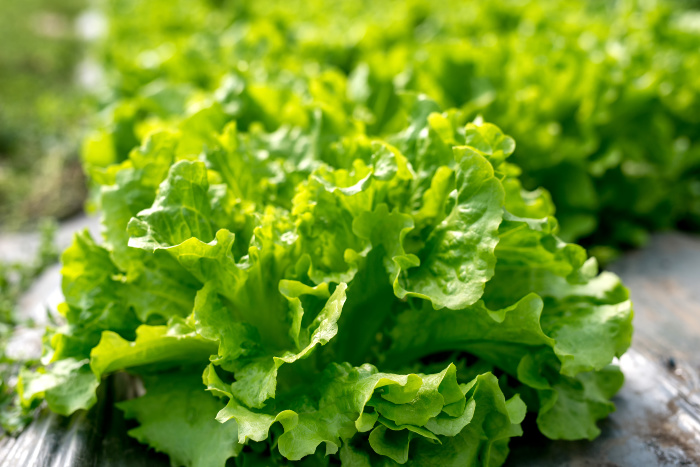
The nice thing about lettuce is that it’s easy to grow and sprouts quickly. Just make sure the soil is loosened, loamy, and well-drained. Lettuce loves nitrogen and potassium, so keep your eye on the leaves as they grow.
Work in a lot of organic matter or compost. Lettuce matures in 55 to 60 days. Romaine takes longer to mature, and so does head lettuce varieties.
Summer Lettuce Seeds: Summer Bibb
Adriana, Coastal Star, Red Cross, and Muir are other heat-resistant varieties.
Plant the seeds about 1/4 inch deep, tamp them in the soil, and water them. Easy and simple. Read the package to space according to the lettuce you choose. Seeds will not germinate in soils above 80 degrees F.
You can start some seeds indoors and transplant the seedlings into a shady spot when the weather is too hot outside to start the plants directly in the soil. You may want to choose heat-resistant varieties if you live where the temperatures get too hot in the summer.
It’s better to pick early than late in the growing cycle because the leaves become bitter if you wait too long.
pH level for Lettuce: 6.0-7.0
Zucchini or Crookneck
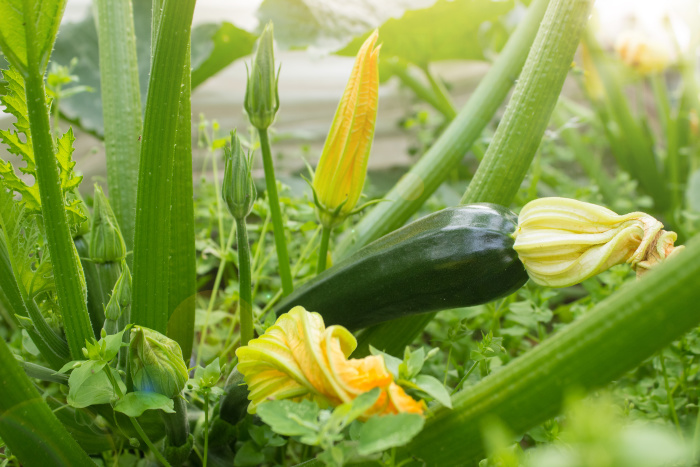
Summer Squash: zucchini, crookneck, and straight-neck (harvested in the summer before they reach maturity). You can start a second planting if you plant the summer squash seeds by the first week or so of July.
Winter Squash: pumpkins, butternut, spaghetti, and acorn squash (harvested in the autumn months after they reach maturity).
When you plant the seeds, test the soil to ensure it is at least 60 degrees F. before sowing. They need total sun exposure, loamy soil rich in nutrients, and proper drainage.
Plant the seeds in hills (2-3 each) one inch deep. Space them 2-3 feet apart. Thin as needed to produce the most vigorous plant. Use a cloche to keep the plants warm in case of cool weather.
Mulch the plants to keep them moist and weed-free. When the first blooms appear, fertilize the plants.
Water deeply, at least one inch of water per week. The soil needs to be moist at least 4 inches down. If your blossom ends turn black and rot, you have blossom rot. It’s usually caused by uneven moisture in the soil. It could also be a calcium problem.
Water must be consistent and frequent for the fruit to produce. If the fruits are misshapen, they may not have received enough water or fertilizer. Check for fruit you can pick daily; they grow faster than you think.
pH level for Squash: 5.5-6.8
Please Check Out What To Plant Each Month:
- What To Plant In January
- What To Plant In February
- What To Plant In March
- What To Plant In April
- What To Plant In May
- What To Plant In June
- What To Plant In July
- What To Plant In August
- What To Plant In September
- What To Plant In October
Final Word
It’s all about self-reliance, and gardening is a great way to do it. It doesn’t have to be the most enormous garden on the block; it can be on a small deck with pots planted with the seeds of the plants you love to eat.
It can be a shared piece of property or several acres. Whatever we can do to produce some of our food is one of the best ways to teach our families to care for themselves.
So, if you were wondering what to plant in July, now you know, and you can pass this information on to your neighbors. Thanks for being prepared for the unexpected. May God bless this world, Linda
Copyright Images: Gardening AdobeStock_218588157 by Irina Fischer

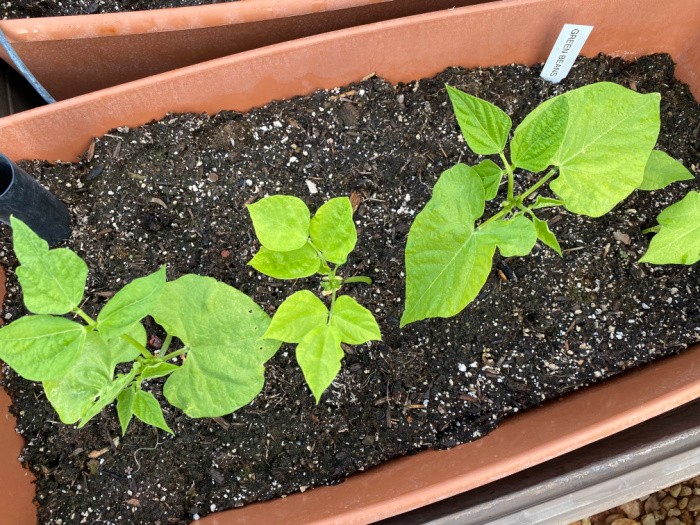

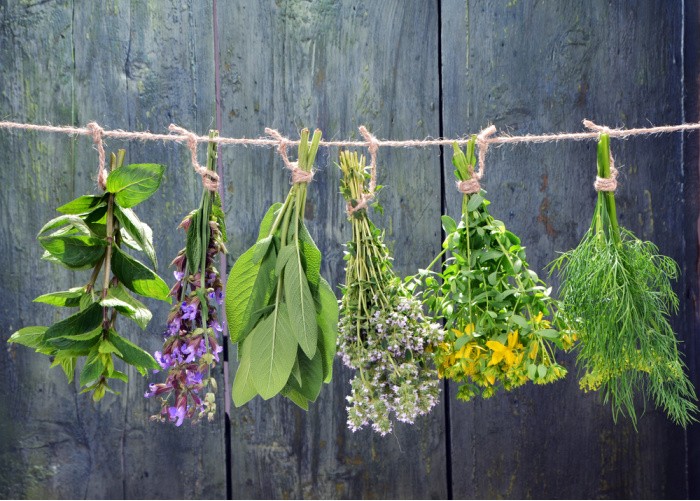
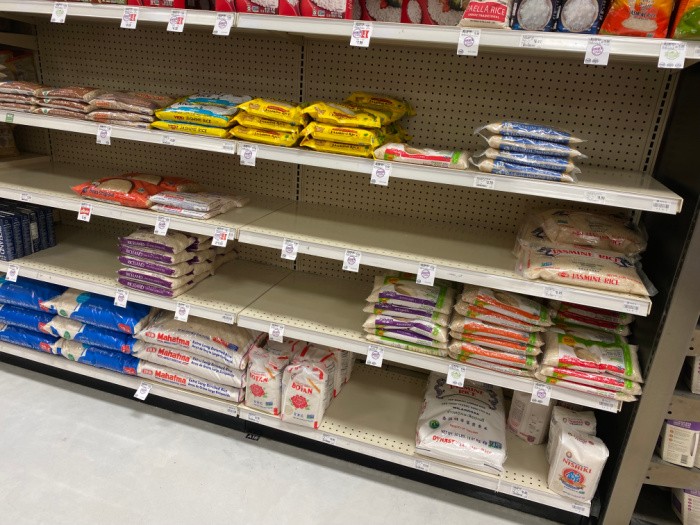
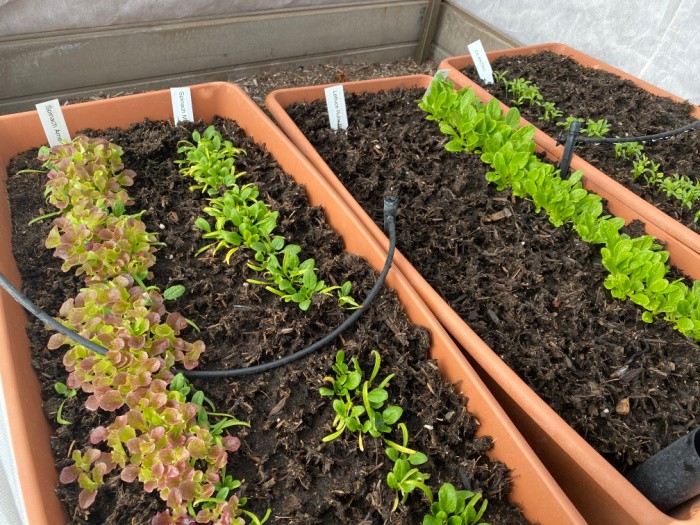
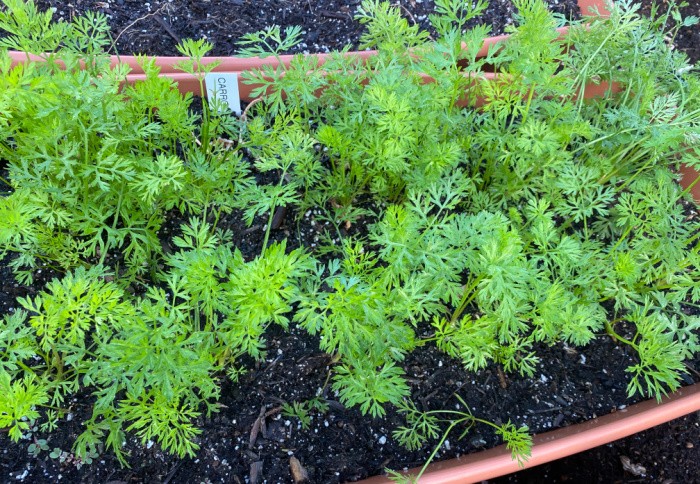
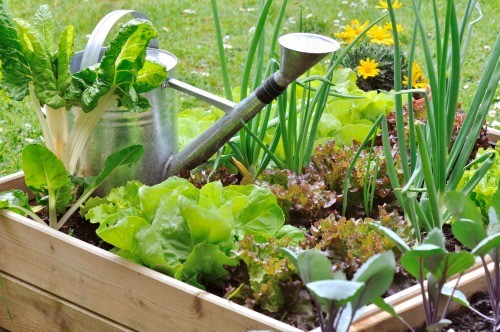
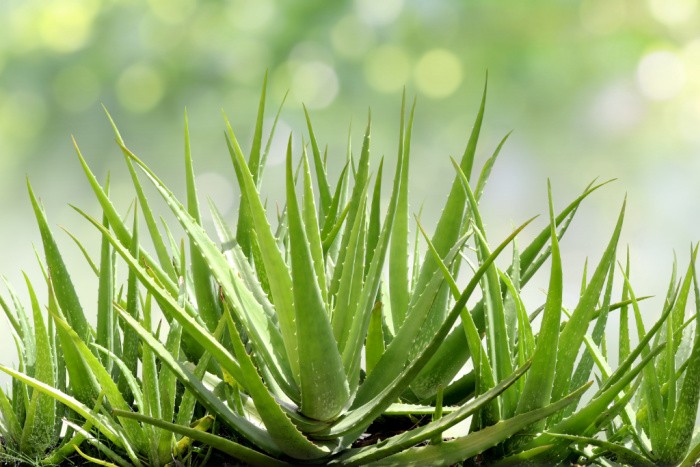
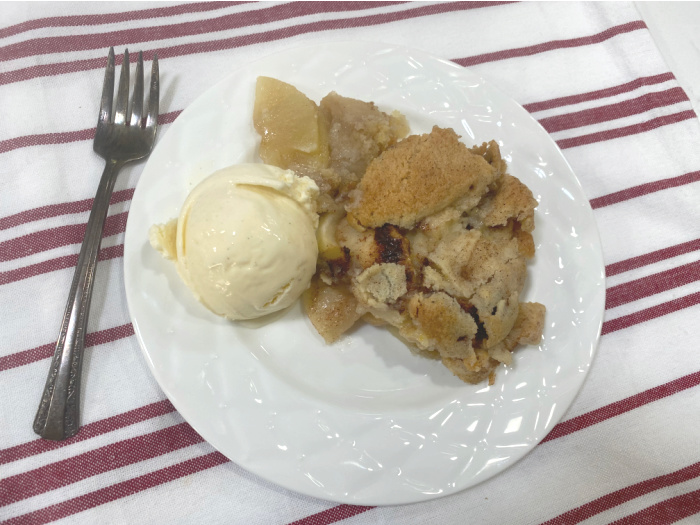
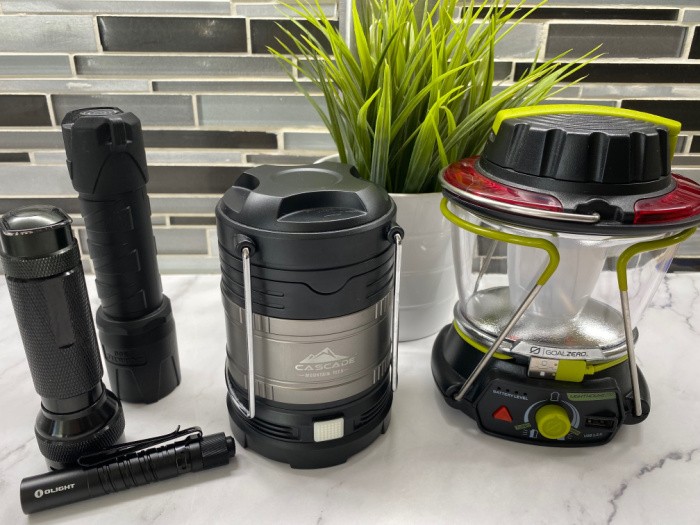
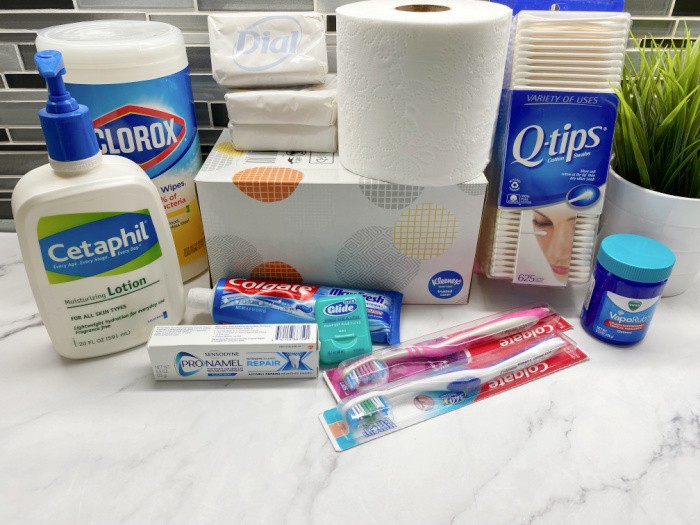
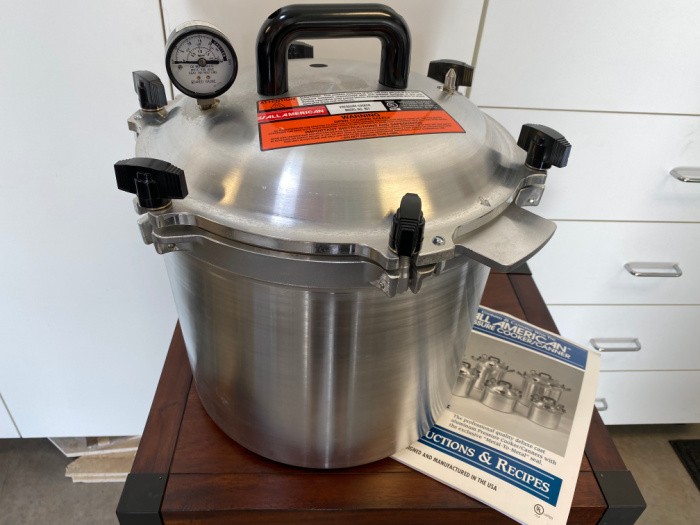
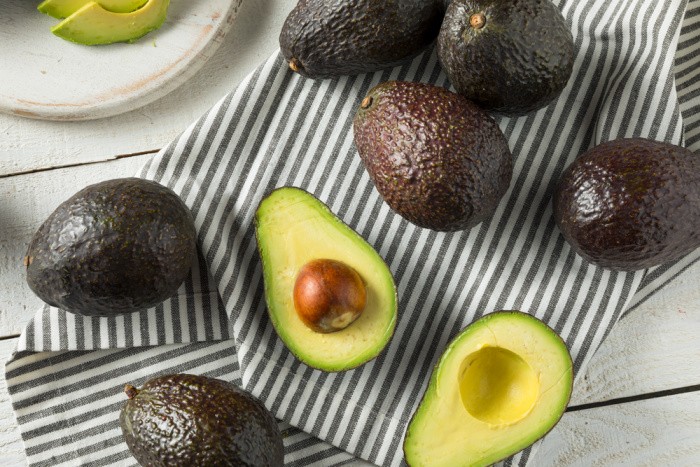
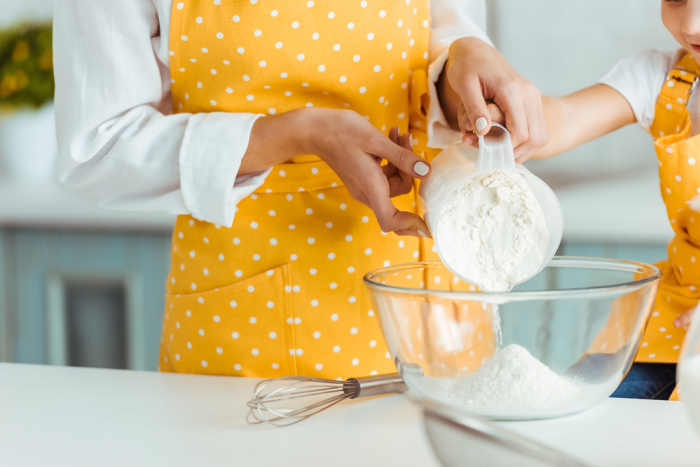
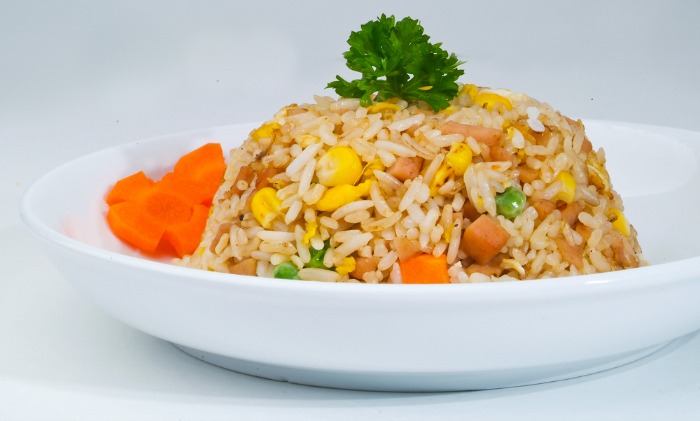
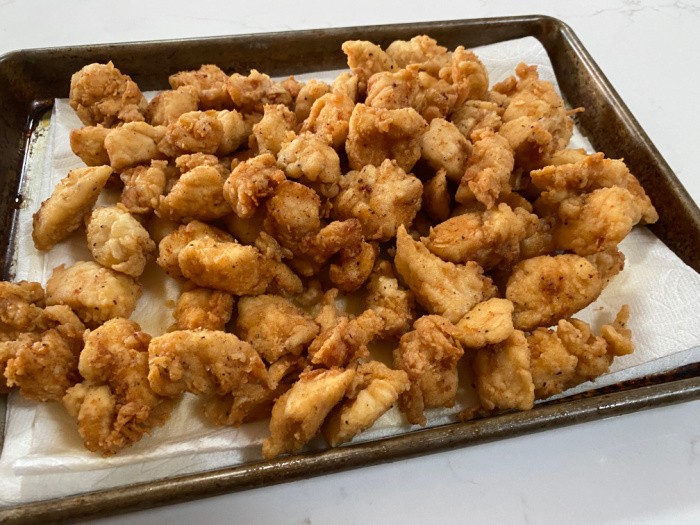
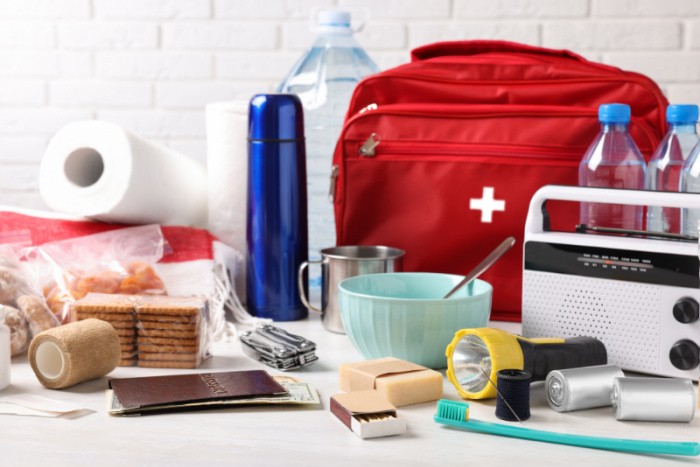
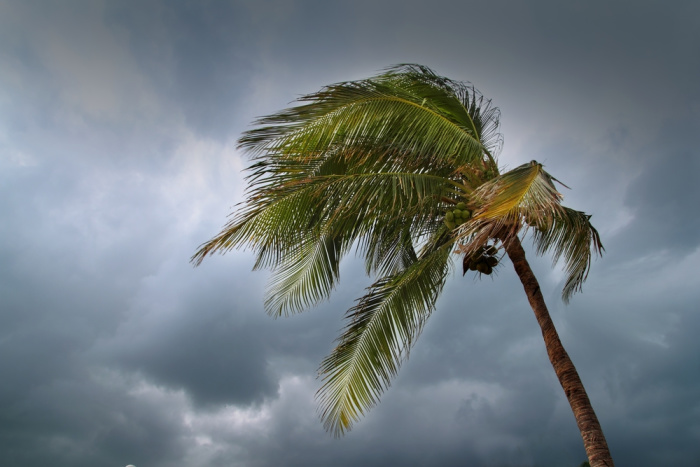
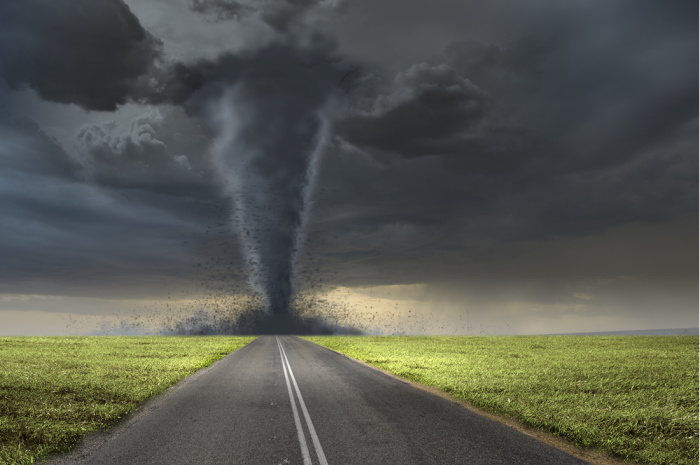
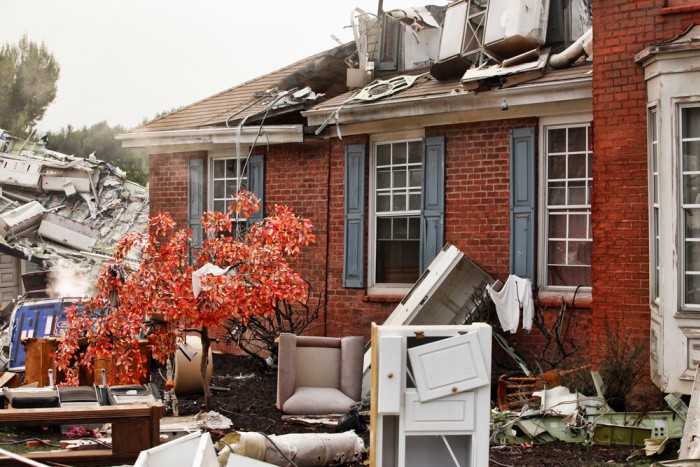
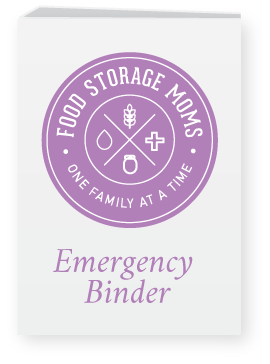

Linda:
I always love when you come out with your updated what to plant month by month newsletter. I always find things I want to try.
HI Jackie, thank you for your kind words, my sweet friend. I love hearing this! Linda
Huge thanks for this post! I am new to your site and new to the idea of trying to grow some of our own food. This post is so, so helpful and inspiring to me! With much appreciation to you, Linda!
Hi Diane, oh, welcome to our forum! Thank you for your kind words, Linda
Oh my goodness Linda! You never cease to amaze! To think all these years I’ve been storing grandbaby photos in my organizer! If I had only known that I should have been saving all my seeds in there instead of photos!!! Hmmm…Linda? I love you but what do I do with all the grandbaby pictures now? Oops!
I really needed some advice on what to plant – we are moving from western Washington to southern Arizona so what I can plant “outside” will be entirely different! I just read in “Grit” magazine that I should be planting my strawberries in late august or early September! Wow!
I think I’ll be sticking with my Aero Gardens for awhile till I get used to the temperatures there.
Thanks again.
(p.,s. I’m now on my 4th copy of your grand book! Everyone – if you don’t already have a copy of Linda’s book get yourself two – yes I said two – copies. You’ll wear out the first copy very quickly – all those Post It tabs and high lighter lines ya know!)
Hi Cheryl, you made my day with all your kind words!! Are you the one that told me about the AeroGardens?? I bought 3 more for my new house that isn’t built yet!! I gave one to a daughter and one to a granddaughter!! I LOVE LOVE LOVE them! It took me a couple of years to learn how to grow a garden in the desert. The heat is a killer and the temps!!! I had to buy a lot of shade fabric to keep my plants from cooking literally in the heat. You are so sweet to mention my book, my friend! The grandbaby photos, I love it!! I can just sit around and watch them crawl, giggle, and learn to walk. My youngest grandchild is now 14, I miss the little ones. Linda
Linda,
I grow Contender green beans every year. They are a very reliable bush type, with good yields and are very tasty. I usually try a different variety of pole beans every year too. I’m still looking for one that is reliable year in year out. The French Climbing bean (Franchi Sementi) I tried the past two years did very well the first year and we’re almost totally unproductive last year. Such is life. As you know, I grow heirlooms so I can save the seeds for the next crop. My Contender beans have been doing well for eight years now. Not that i’m planting eight year old seeds, but I’ve found they last for at least two years without any problems at all.
By the way, I save my seeds in an old, but still functioning, fridge, in everything from envelopes to glass jars.
Hi Ray, I love hearing about the beans that will grow in the desert and I’m sure other places. Heirlooms are the only seeds I buy as well. It’s hard to judge how long the seeds will store and still germinate. Thanks for letting us know about the bean seeds lasting 2 years. It’s hard to tell how long they will last. The fridge idea is a great tip! Linda
Linda,
I forgot. I highly recommend Hopi Grey and Delicata squash. Much like acorn squash they bake up beautifully with butter and brown sugar. Next to the Black Beauty zucchini i grow every year they are my favorites. They also are delicious simply sauteed in butter. Both last a long time but the Hopi Grey gets huge and can last all they way through the winter and until your next years zucchini crop is ready. Seriously, if kept in a cool, dry environment I’ve had it last for 9 months.
Hi Ray, oh my gosh, that is awesome! I love squash! I will have to try the Hopi Grey! Great idea! Linda
Hi, Linda: I think that one suggestion for Zone 5 is a bit off. We live in Zone 5! We would have had to sow winter squash a month or more ago, for them to mature in time. I rushed out to the garden to plant winter squash and melons in mid-to-May, even though the temps. were a bit cooler than usual. Usually, would have planted them even sooner! Summer squash, like zucchini, etc. is fine for a slightly late planting. (We were gone, so I didn’t plant them until very late June or July 1st, and they look awesomely happy!!) I am really looking forward to the Zephyr summer squash, which are my no. favorite summer squash on the planet.
Don’t get me wrong, though, I love all of your posts! Just a suggestion, you may wish to switch that winter squash suggestion to “summer squash”.
About flowers in the garden, not only are they beautiful amongst all those green plants, but I learned a few years ago that planting zinnias (and marigolds) next to squash plants keeps the squash bugs and squash borers away! I LOVE having tall, beautiful purple, pink, magenta, orange, yellow, white and light green zinnia patches between the squash plants. We used to lose so many squash, as the squash vine borers would decimate the vines and leaves, so that everything that was gorgeous 2 days ago would suddenly become wilted and die. NOW, with Zinnia patches here and there, I don’t get that anymore, PRAISE GOD!! We also LOVE the Cracker Jack and African Marigolds that come up about 14″ high with giant almost fluorescent blossoms! I never loved marigolds until discovering those! They are like a shrub when in full bloom!! People who come to help pick our berries always comment on the Cracker Jack Marigolds! 🙂
Yes, my husband is going back out to the garden again tomorrow to retill some places that grew grass while we were away, so I can plant broccoli, box choy, spinach/lettuce/amaranth greens, flowers, herbs, and more beans! YAY!! I love the growing season! We grow Amaranth greens because I had them 3 years in a row while doing short-term mission work in Uganda, and I fell in love! Also very popular in the Caribbean, known as Calaloo there. They are great in salads, but superb stir-fried with garlic and onions. Oh, my gosh, that makes me hungry, just thinking about those!!
We are so blessed with blueberries and raspberries again this year, I need to defrost my freezer yet AGAIN!! HELP!! And, blessed to be sure, we finally rescued enough gooseberries (YAY! YUM!) from the critters, that we got a nice haul this year. 🙂 Last year we only got 2 berries total!! One for me and one for hubby. 🙁 Now, I need to figure out how to keep the birds and deer out of our seedless Concord grapes before the harvest this September!!
By the way, if you see funky typos in this message, it’s because this goll-darn autocorrect keeps changing what I type, and it changes it to words that are incorrect!! (For example, while I was typing that last sentence, it switched it to *toll, not “toll” *toll, as you can see, it keeps doing it no matter how many times I type *goll. (Last word, switched again to *”doll”, but I switched it back yet AGAIN!)
Best to you all on these posts! Love your work, Linda! I read your emails everyday, even though I don’t post that often! HAPPY SUMMER, Y’ALL!
Hi Jess, I will switch the winter to summer squash!! Thank you!!!! The temperatures keep changing, too much rain, no rain, drought, heat, storms, yikes! I LOVE hearing your garden is doing so well!! Linda
Yes, Linda: Just south of us (about 35 mins.) experienced massive flooding earlier this week, in Canandaigua, NY, where our church is located. We have been somewhat involved in helping Red Cross help the flood victims, though not as much as I would have thought we would. We have had very unusual and crazy weather a LOT this year, too. My garden, by God’s grace, is doing better than I would have expected with all the variable changes, but doing O.K. I think the berries love all the extra rain they’ve had this summer!
Have you seen the movie “Sound of Freedom” yet? I recommend that you rush out to see it before it is gone from Theaters. It is a life-changing experience to watch it, though they did not show any XX rated stuff that I originally worried about! It’s about one man’s journey to rescue trafficked little children and young teens. So moving! The producers had such flack from Deep State operatives and pedos, that it took them 5 years to actually get it out to theaters, but this movie is AWESOME!
Best,
Joyce S.
Hi Joyce, oh the massive flooding in Canandaigua, NY!! This year has been crazy with weather that’s totally unexpected. I will check out that movie, thanks for the heads up. Linda
Linda,
This week I’m planting Contender and Anasazi bush beans and Hopi Grey squash. My pole beans are finally climbing my corn stalks and my melons are forming fruits. Today I’m harvesting bunches of Gala apples and also Santa Rosa plums (before the birds get them all). 111F yesterday but will only be 109F today.
Hi Ray, someday I’m going to drive down and see your property! I’m too old to drive down there but it sure would be fun to meet in person and see your garden and fruit trees!! Linda. 111 degrees??? Yikes!
Hi Ray, oh the fruit trees, oh my gosh I wish I had those! Those darn birds better stay away from that sweet fruit! 109 today! Did you hear Las Vegas got up to 117 degrees yesterday. or the day before? I grew up there and I have 2 sisters that still lives there. I have some grandkids down there for a basketball tournament, YIKES! Linda
Oh, I’m planting more cucumbers too–a hybrid called Tasty Green that lives up to it’s name. And my banana peppers are forming up nicely. Kuroda carrots, Bright Lights Swiss Chard and even Ithaca Lettuce are still going strong–though the lettuce is trying to bolt. Shade cloth saved the cucumbers I planted earlier. Butterfruit corn was harvested July 5, and I made the mistake of leaving it too long on the stalk. I allowed the silks to dry and turn brown, as I’d always done with other varieties, but it turns out the ears I picked with less mature silks were much sweeter. Live and learn with each new variety tried. That’s what makes gardening fun and challenging.
Hi Ray, you know I LOVE hearing what you are planting and harvesting! Once I get a garden going (they just installed the HVAC and gas lines) the electrical wiring will be put in tomorrow. SLOW, but it’s coming along. You and Jane eat so well, I love hearing about it! Linda
110 heat index today at 101. Planting myself in a chair after 10am
Hi Matt, oh my gosh, that is way too hot! Planting yourself in a chair sounds a lot better! LOL! Linda
Matt,
That’s a Texas cool front!!! LOL!!!
Hi Harry!!!! LOL LOL LOL, Good one! Linda
Linda,
Garden Update 6-29-24
Spring was weirdly cool this year so the tomatoes and cucumbers I started inside in January were very late being planted. I’m growing 13 different varieties for a local Master Gardener’s research project which aims to discover which varieties grow best here in Kingman, AZ.
So far the hands down winners are Gardener’s Delight and Peacevine (the heirloom version of Sweet 100), with Sugar Rush (another cherry) and Super Sweet 100 (a hybrid) right behind them.
As far as slicers go Bush Champion II (a hybrid) is doing well, and Super Sioux is also producing. But the rest, including my favorites Mortgage Lifter and Wapsipinicon Peach aren’t producing yet and along with the others probably won’t’ until it cools down in September.
On the plus side, even with temps int eh 100’s I’m still getting small heads on m Di Ciccio broccoli (an heirloom I grow every year) and my Goliath Hybrid broccoli. I’ve already harvested the main heads from both.
For the second year in a row my Tasty Green Cucumber (a hybrid) is coming up a winner, growing well and flowering.
My Tohono O’odham yellow fleshed water melon (super delicious) is growing like a week and my Crimson Sweet watermelon is flowering. All the cantaloupe and squash I planted were eaten by something as soon as they came up. I suspect baby ground squirrels, which are small enough to wiggle through my 1” chicken wire fencing. I went on a massive trapping and hunting campaign and got that population back under control.
That allowed me to replant Hale’s Best cantaloupe. I’ve restarted Hopi Gray Squash, Borchart’s Wonder squash and Black Beauty Zucchini inside, where they’ll remain until I can transplant them among my corn and beans.
My Candy Mountain sweet corn is about 2’ tall and the Monte Gusto Yellow Pole beans I planted among them are growing nicely.
My Scarlet Nantes and Kuroda carrots are still producing though many are trying to bolt.
All of my lettuce and chard have bolted, except for Jericho lettuce—a Romaine type bred to handle the scorching heat of Israeli summers.
Oh, I’m currently harvesting Anna Apples, Dorsett Golden Apples, Bonanza Peaches and Santa Rosa Plums. The latter two aren’t as ripe as I’d prefer but the birds are finding ways to penetrate my bird netting so I have no choice but to finish ripening them on a window sill.
Hi Ray, you always make me smile when you share what you have planted and are harvesting! What a great experience to be working with Master Gardeners! I never asked are You a Master Gardener? I was starting to take the classes in Southern Utah, I knew I could achieve the certificate but be decided to sell the house. You are living the life my friend! There is nothing better than growing your own food! Linda
Linda,
I’m not a Master Gardener. I just work with them teaching classes on propagating plants and that sort of thing. This year in addition to that I’m testing out different tomato varieties for them. Last year a variety called Prairie Fire won the taste contest so they wanted to see how well it does here in Kingman. That’s one of the varieties I’m growing and so far it hasn’t produced anything noteworthy. Sugar Rush is a small cherry tomato that is very sweet though it has a thick skin, which Jane doesn’t like. She prefers Peacevine, which isn’t as sweet but has a nice thin skin and great tomato flavor.
Hi Ray, with your knowledge you should be one, in my opinion. You are a Master Gardener in my eyes! Linda